Books in English
- Shiatsu opens a space.
- Space to meet yourself.
- Space to meet other people.
- Space to meet a field beyond the personal.
- How do these encounters manifest?
The Essence of Shiatsu
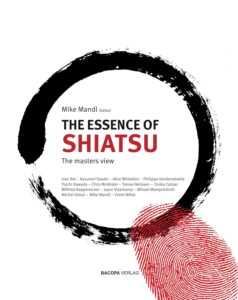
Shiatsu is relatively young compared to other traditional healing systems: less than 100 years old, Shiatsu has developed rapidly and spread just as quickly. From a conglomerate of different roots, a trunk with many branches and even more blossoms has emerged in a short period of time.
But what is the essence of Shiatsu? What principles is it based on? What is the role of Ki? What is the role of the meridians? How central is the hara? And what distinguishes a good practitioner?
This book project is dedicated to searching for answers: leading global Shiatsu experts with decades of experience have their say. Their perspectives on fundamental questions about Shiatsu will contribute to a deeper understanding of the essential aspects of our art. In it, you'll find Ivan Bel, Kazunori Sasaki, Alice Whieldon, Philippe Vandenabeele, Yuichi Kawada, Chris McAlister, Tomas Nelissen, Tzvika Calisar, Wilfried Rappenecker, Joyce Vlaarkamp, Mihael Mamychshvili, Michel odou, Mike Mandl and Viorel Mihai.
Acupressure: For Health, Vitality and First Aid (Health Essentials)

The origins of acupressure stretch back thousands of years to the mysterious beginnings of ancient Chinese medicine. Offering all the benefits of acupuncture - but without the need for needles - acupressure can be used to treat the symptoms of complaints as diverse as panic attacks, fatigue, toothache, childbirth, migraine, travel sickness and stress. Written by an accomplished teacher and practitioner, this highly readable guide covers acupressure's ancient origins, Chi and meridians and their place in acupressure, acupressure for first aid, a simple DIY routine, and examples of successful treatments. The author was a teacher at East-West Center of London.
The Body Keeps the Score: Brain, Mind, and Body in the Healing of Trauma
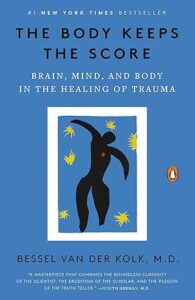
Trauma is a fact of life. Veterans and their families deal with the painful aftermath of combat; one in five Americans has been molested; one in four grew up with alcoholics; one in three couples have engaged in physical violence. Dr. Bessel van der Kolk, one of the world’s foremost experts on trauma, has spent over three decades working with survivors. In The Body Keeps the Score, he uses recent scientific advances to show how trauma literally reshapes both body and brain, compromising sufferers’ capacities for pleasure, engagement, self-control, and trust. He explores innovative treatments—from neurofeedback and meditation to sports, drama, and yoga—that offer new paths to recovery by activating the brain’s natural neuroplasticity. Based on Dr. van der Kolk’s own research and that of other leading specialists, The Body Keeps the Score exposes the tremendous power of our relationships both to hurt and to heal—and offers new hope for reclaiming lives.
Die transkulturelle Integration außereuropäischer Konzepte in den 2. deutschen Gesundheitsmarkt am Beispiel Shiatsu
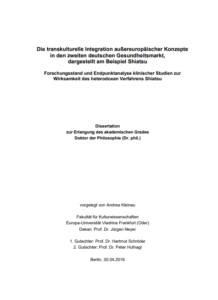
Shiatsu, eine japanische Lebensform und ein Behandlungsverfahren der Körperarbeit zugleich, hat auf dem sogenannten zweiten Gesundheitsmarkt in den letzten Jahrzehn-ten in Europa einen festen Platz eingenommen im Zuge einer Integration fremdkultureller Konzepte in die Eigenkultur. Dabei kann in dieser Arbeit belegt werden, dass das Ver-fahren selbst bereits kulturelle Verflechtungen in sich trägt und Anteile anderer Kulturen übernommen hat, so auch der deutschen Lebensform. Eine kontinuierliche Weiterent-wicklung einer Vielzahl medizinischer Erkenntnisse und Praktiken japanischer Mediziner ist verantwortlich für die Herausbildung des heutigen Shiatsu. Shiatsu wird als Teil der heterodoxen Medizin vergleichend zur komplementär-alternativen Ausrichtung bestimmt. Die heterodoxe Medizin liegt üblicherweise außer-halb der Schulmedizin. Es kann aber gezeigt werden, dass die Ausübung der Shiatsu-Methode nicht auf privat ausgebildete Praktiker und damit den zweiten Gesundheitsmarkt beschränkt sein muss. Vielmehr bietet sich den Akteuren des ersten Gesundheitsmarkts ein Spektrum an Einsatzmöglichkeiten, die zentrale Ziele des Gesundheitswesens unterstützen. Weiter kann aufgezeigt werden, wo sich in der Struktur des deutschen Gesundheitswesens Ansatzpunk-te zur verstärkten Integration von Shiatsu in den Gesundheitsmarkt finden lassen, wie eine unterstützende Argumentation aussieht und ob es evidenzbasierte Studien zu Shi-atsu gibt, die auswertbar sind. Die Arbeit bietet dazu einen umfassenden Überblick bis-heriger Forschungsergebnisse innerhalb eines Reviews, ergänzt durch eine Metaanaly-se klinischer Studien. Im Review können insgesamt 15 Studien verglichen werden, wo-bei Studienanalyse A die monokausale Wirkung bei spezifischen Krankheitsbildern an-hand kontrollierter Studien und Studienanalyse B die multifaktorielle Wirksamkeit des Shiatsu anhand von Querschnitts- und unkontrollierten Studien dokumentiert. Fünf kon-servative Studien fließen in die ergänzende Metaanalyse ein. Gegenüber Verfahren der Schulmedizin, die in kontrollierten Studien als Ver-gleichsmethode eingesetzt werden, kann im Durchschnitt eine leichte Überlegenheit von Shiatsu über die eingeschlossenen Studien belegt werden. Im Ergebnis der Arbeit wird das Verfahren als geeignet bewertet für multimodale Therapien bei Indikationen, die im Zusammenspiel von Körper, Seele und Umwelt entstehen. Am Ende steht ein perspekti-vischer Ausblick auf die wirtschaftliche und politische Entwicklung.
Laden Sie die Studie unter diesem Link herunter.
The Spirit of Shiatsu
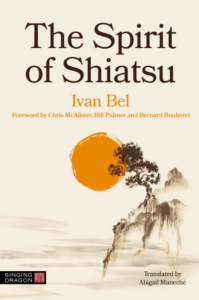
Going beyond the practical technicalities, this in-depth manual delves into the founding principles and philosophy of Shiatsu on a technical, cultural, energetic, and conceptual level.
Split into three parts and based on two decades of international experience, Ivan Bel first returns to the basic technical principles of Shiatsu, then explores the complexities of the person-centred mind/body theory behind the practice, and gradually expands into the philosophical elements of natural health.
Concepts and questions that are often excluded from practical Shiatsu resources are carefully explained, including inner cleaning and purification, linking energy, and the impact an individual's environment can have on their health. Enriched with case studies and comprehensive yet accessible language, this is ideal for both Shiatsu students and practitioners.
In exploring the 'why' as well as the 'how', this must-have resource allows teachers and students to expand their knowledge and awareness for a more complete and flexible understanding of this ancient discipline.
Shiatsu: space for Encounter
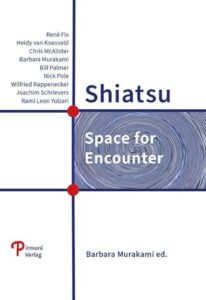
Explore the art of creating profound relationships while practicing Shiatsu in **“Shiatsu – Space for Encounter.”**
What conditions are necessary for them to take place?
Nine authors approach these questions from culturally very different perspectives and with very different text forms.
The Uncharted body
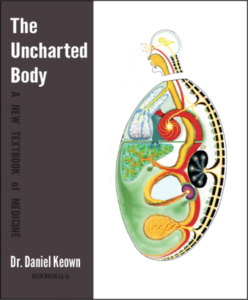
The Uncharted Body is the follow up to The Spark in the Machine.
This textbook shows how there is a hidden and invisible world inside our bodies, which runs on energy. Within our every cell lives mitochondria, power generators with an electric current strong enough to create a spark of molecular energy. The mitochondria ‘donate’ these power molecules to each of our cells, which in turn use them to generate further electricity to drive their machinery.
The electricity doesn’t stop there. It organises and powers the brain and heart. It moves our muscles and bowels and pulses within each nerve. It lies delicately balanced across the membranes of the liver, spleen, and kidney, lubricating their functions and driving their mechanisms. It moves in channels in the body and concentrates in nodes. Electricity is the energy of our lives.
When it goes wrong it can cause chaos, catastrophe, and even death. It can rebel, or lie silent and stagnant. It can drive cells mad and turn them cancerous, make organs malfunction, or make us cry out in pain. Trying to make sense of the human body without understanding this primal energy, and the huge intelligence that drives it, would be like looking inside an unplugged computer and believing you can decipher it.
The Uncharted Body will open that Universe to you showing you how to read it, understand it, and correct it; bringing the world of Chinese medicine, blinking, into the 21st century. It is the body re-described and re-charted from the bottom up, through a world of energy rather than a mechanistic description of parts; and a window into the mysterious world of qi (pronounced ‘chi’) that has governed acupuncture practice for millenia.
This book will radically transform your view of the human body.
The Spark in the Machine: How the Science of Acupuncture Explains the Mysteries of Western Medicine
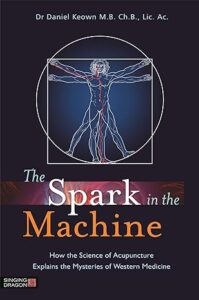
Why can salamanders grow new legs, and young children grow new finger tips, but adult humans can't regenerate? What is the electricity that flows through the human body? Is it the same thing that the Chinese call Qi? If so, what does Chinese medicine know, that western medicine ignores? Dan Keown's highly accessible, witty, and original book shows how western medicine validates the theories of Chinese medicine, and how Chinese medicine explains the mysteries of the body that western medicine largely ignores. He explains the generative force of embryology, how the hearts of two people in love and much more.
As a doctor, surgeon and acupuncturist, his knowledge of anatomy and meridians applied to anatomy is fantastic. A must read!
Physiology of Shiatsu: for beginners
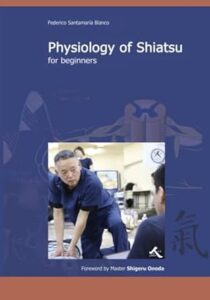
“Physiology of Shiatsu for beginners” is a compilation of the seminars given by Dr. Federico Santamaría at the Japanese Shiatsu School of Master Shigeru Onoda in Madrid (Spain) in recent years.
The author explains in a simple -adapted to students without previous health training- languaje what are the mechanisms of action of Shiatsu from the point of view of Western science.
Shiatsu has physical effects on the organism of our patients, which can be explained from a neurological, hormonal and biochemical point of view.
With our pressures we induce cellular stress, a transitory ischemia, we act on proprioceptive receptors, we provoke the secretion of endorphins, and we modulate the activity of organs and viscera through the tsubos, which are access points to the central nervous system, capable of activating brain areas at a distance.
An essential text to understand Shiatsu from our western mentality.
Another Self: How Your Body Helps You Understand Others
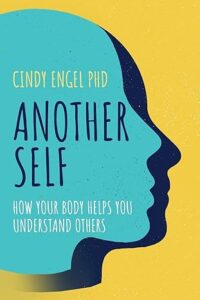
Why does your nervous system register other people's pain and distress as your own? Why might your dentist make more mistakes when you are fearful? How does your dog know when you are unwell? Why does your heart rate synchronise with the person you are listening to?
Another Self explains why we sometimes take on the physical, emotional, and even mental states of others. In this book—the first overview of somatic empathy—Dr Cindy Engel brings together research into social perception and interpersonal physiology to explain how and why our thoughts and feelings are not always entirely our own.
New evidence reveals that this tendency to 'catch' others' emotional and physiological condition is not merely a quirk of sensitive individuals but a fundamental aspect of human intelligence: feeling with others is an ancient strategy reaching back into our evolutionary past enabling us to predict their intentions.
Understanding how somatic empathy works and that it affects us without our knowing, enables us to sidestep the perils of taking on another self (vicarious harm, overwhelm, and burnout) while optimising our comprehension of ourselves and others.
Be prepared to reassess your sense of self, your relationships, your occupation, and your choice of entertainment.
Cindy Engel is a Shiatsu practitioner with a large experience about somatic empathy through her practice. Peter Deadman (founder of the Journal of Chinese Medicine + author of Manual of Acupuncture etc) thinks it should be read by “every doctor, nurse, therapist, body worker and complementary medicine practitioner”. And Cliff Andrews reckons “a must read for anyone working in any therapeutic profession”.